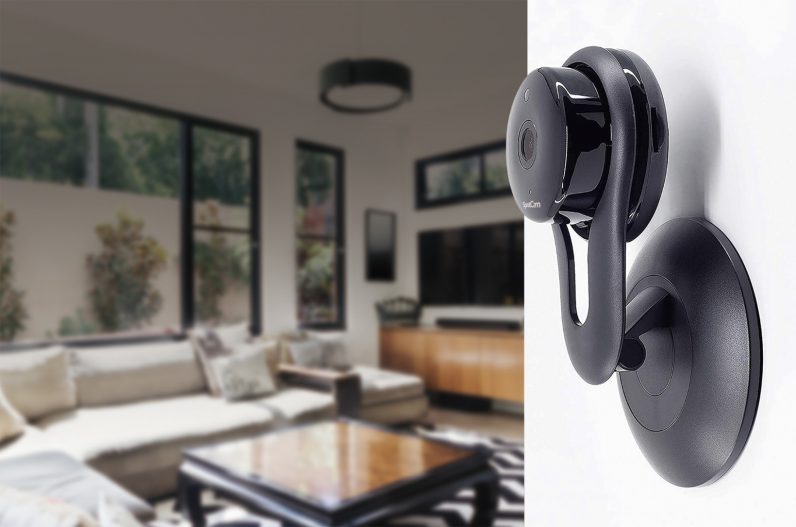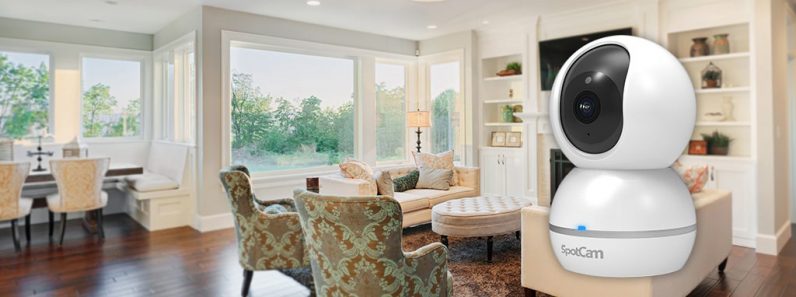
Home security is booming. More and more of us have smart doorbells, alarms, and locks — but AI, together with the cloud, is set to revolutionize how these devices work.
And much of it is down to the increasing ubiquitousness of cameras.
These days, we expect this technology to appear on our devices, but cameras offer much more than entertaining selfies in the realm of security — especially when cloud connectivity and AI underpins its capabilities. We’re about to enter a whole new era of home security, and SpotCam wants to be central in this.
Beyond facial recognition
AI is synonymous with facial recognition, but the home security systems of the future will look beyond our faces to offer protection. Indeed, it won’t be long until facial recognition is a standard feature, not the standout offering it once was.
Instead, tech companies are taking two main approaches to their home security innovations
The first is the extension of existing home security conventions. Think the rise of NFC keys connected to our phones and hands-free smart locks. These are examples of traditional home security products with a technological twist, the type we’ve all pondered at some point with a wistful, “If only…” when our keys go missing.
The second approach involves novel technologies that reinvent home security by removing the boundaries of human limitations. AI-powered night vision cameras and home surveillance drones will give users unprecedented visibility of their homes, operating beyond humans’ natural capabilities.
Although both approaches are different, they cannot exist without each other. The former improves our current technologies, and the latter only become a possibility when more traditional methods gain prominence.
Neither will happen overnight.
But Jacky Lin, Product Manager at SpotCam, told us it will come to pass. Specifically, she told us the adoption of AI-powered home security will mirror the popularity of camera technology in the home.
“It has become easier for people to use a DIY solution” to protect their living spaces, Line said. “You just buy a WiFi camera and put it in your house” and that operates as a simple home security system. Unfortunately, simple doesn’t cut it anymore.

The march of advancement
While a bog standard WiFi camera does a job, it cannot match the feature-set and security benefits of dedicated technology.
Lin pointed to SpotCam’s latest devices as an example: the SpotCam FHD 2 and SpotCam Eva 2. Both these cameras record in full HD and include cloud-saved continuous recording. But it’s with the AI features that these, and other home security devices, display the benefits of specializing.
For example, certain home security cameras can now monitor if babies are crying or can detect pets, arguably replacing existing products for those circumstances. This AI analysis can also be used in other circumstances, such as creating virtual boundary lines that will detect a passing intruder.
Connected security of cloud based systems
Cloud-based and connected technology means security is no longer bound within the four walls of a home — and today’s consumer expects unparalleled access to home security irrespective of location or device. And this expectation is only going to increase in the future.
Lin told us this has manifested itself through device integrations, which means users can access hardware through connections with Google Home, Amazon Alexa, Nest, IFTTT, and more, thanks to the prevalence of cloud-based service platforms.
This simple and easy access to this technology transforms home security from a siloed function to a normalised and integrated part of daily connected life — and there will be big pay-offs from this shift.
For example, recent research from Facebook foresees a future where AI robots will be able to check whether doors are locked in the house. The future is coming, and home security will play an important role in the connected household.
SpotCam’s Lin envisions the mainstreaming of home security as an avenue towards the creation of a more hospitable home environment. “We hope in the future, we can do more. For example, if it’s someone you know [entering your home], you can play specific music or audio. This kind of automation can be achieved” — and AI is key to making it happen.
The desire to protect our homes is not new. Rather, it is a necessity, and its importance prompts the innovation of home security. For SpotCam’s Lin, the adoption of this necessary technology is the foundation for the more carefree connected home technologies that will follow.
But there is a pressing question that goes alongside security moving out of the four walls of home: security.

How secure is home security? The cloud vs edge AI debate
First, let’s define the terms. Cloud AI means its processes are done in remote locations. On the other hand, edge AI occurs on the hardware itself.
The current era of home security devices generally depend on cloud technology to deliver their features, but as home security advances, the adoption of edge AI could transform the space.
This is important for a number of reasons. For example, owners of connected devices have complained they are unable to use their devices if cloud servers are down, so edge computing presents an attractive alternative to run cloud operations locally on devices.
Edge AI’s real-time analysis, lack of latency issues, encryption, and storage of biometric information on the device bridges the gap between cybersecurity and physical security. Our concept of home security prizes user autonomy, and edge AI provides more of it.
But don’t get too excited just yet.
Although current edge AI can support tasks like unlocking a smartphone with facial recognition, the magnitude of its application to home security means its mainstream inclusion is still a while away. As SpotCam’s Lin puts it, “If you want to do edge computing, to run all algorithms, you need a dedicated server, and that architecture is not possible for residential users.”
Instead, a mixed approach to cloud and edge computing is the next step, Lin told us.
“At this moment, edge computing is beginning to get more powerful, and every stage is still complementary to cloud computing. Maybe in the future, most services will run on edge, but this is not happening yet. We think a combination is a good approach.”
AI and security autonomy
The adoption of AI in home security will bring a new level of visibility and ease, shifting security from an outlier technology to a cohesive part of the connected home.
As the technology matures, we’ll see more products that address security concerns and provide hospitality — but this innovation isn’t just the work of technology alone. Our attitudes towards connected security devices are changing too.
Home security is transforming from a utility to modern home comfort, and how we adopt it now will shape its future trajectory. In other words, we have the autonomy to decide how our homes are protected — and AI plays a vital role in that shift.
For more information about SpotCam, head here.
Get the TNW newsletter
Get the most important tech news in your inbox each week.





